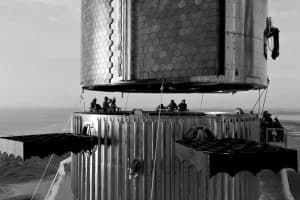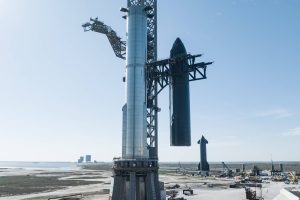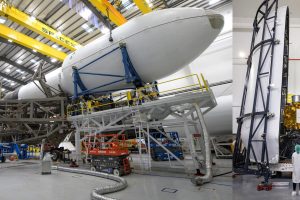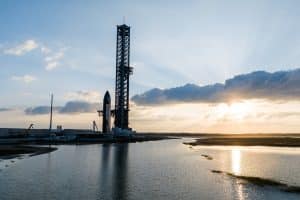Less than three weeks after the US Government Accountability Office (GAO) categorically denied protests from Blue Origin and Dynetics over NASA’s decision to award SpaceX a Moon lander development contract, the former company has sued the space agency.
First reported by The Verge, Blue Origin filed its lawsuit against NASA with the US Court of Federal Claims on Monday, August 16th and continues to spout the same kind of rhetoric that GAO wholeheartedly refuted on July 30th. Namely, the office explicitly upheld the procurement process and reasoning behind NASA’s decision to award SpaceX – and SpaceX alone – a contract to develop a crewed Moon lander.
Thus far, the central argument put forth by Blue Origin and Dynetics is that NASA effectively invalidated the entire Human Landing System (HLS) “Option A” procurement when it didn’t award two HLS development contracts. Option A refers to a limited portion of the HLS program focused on funding the development of crewed Moon landers and the completion of two crucial flight tests – one uncrewed and one with NASA astronauts aboard.
Program-wise, HLS is quite similar to NASA’s Commercial Crew Program (CCP), which began as a series of smaller contracts focused on capability demonstrations that culminated in a major competition to ferry NASA astronauts to and from the International Space Station (ISS). Ultimately, NASA selected Boeing and SpaceX and the rest is now history (SpaceX flourished; Boeing floundered) and despite unsurprising delays, the program has been an extraordinary success and a financial bargain.
As part of the major Commercial Crew Transportation Capability contracts SpaceX and Boeing won, both companies were tasked with designed, building, and qualifying crewed spacecraft to NASA specifications. The centerpiece of those contracts was a pair of full-up demonstration flights to and from the ISS – one uncrewed and the other with two NASA astronauts. NASA then separately purchased “post-certification missions” – operational crew transport flights – from both companies a few years into development.
The corollaries between Commercial Crew and HLS are clear and unsurprising. However, unlike the Commercial Crew Program, NASA has been able to structure HLS with the benefits of hindsight. This time around, already faced with a Congressional funding shortfall even worse than years of half-funding that directly delayed CCtCap, NASA used a different procurement ‘vessel’ for HLS and repeatedly warned competitors that while it wanted two Moon lander providers, the ability to award two contracts would be entirely dependent on funding availability.
In other words, NASA had learned an important lesson from the Commercial Crew Program and wasn’t about to trap itself with contractual obligations that far outmatched recent Congressional funding trends. Intentionally or not, NASA structured HLS in such a way that it only awarded major Option A lander contracts after Congress had already appropriated its FY2021 funding. As it turned out, Congress ultimately provided a pathetic 25% of the full $3.4 billion NASA had requested, leaving the agency no choice but to downselect to just a single provider – SpaceX. Put simply, NASA has assumed that Congress will continue to supply just a tiny fraction of the funding it would need to develop two landers on time and SpaceX’s Starship proposal was just cheap enough to make any Option A award possible.
The fixed-price contract will cost NASA $2.9B over four or so years – narrowly within the space agency’s reach if Congress continues to appropriate around $850M annually ($3.4B over four years). The numbers are very simple. As GAO notes, the Broad Agency Announcement (BAA) vehicle NASA used for its HLS Option A procurement also strictly allows the agency to select as many or as few proposals as it wants, including none at all. In the lead-up to proposal submission, official NASA documents repeatedly cautioned as much, warning that the agency might not even award one contract depending on funding or the quality of proposals it received.
For Blue Origin’s lawsuit to succeed, the increasingly desperate company will have to convince a federal judge that basic realities and longstanding precedents of federal procurement – not just NASA’s HLS award to SpaceX – are flawed and need to be changed. The odds of success are thus spectacularly low. However, if the presiding judge allows the case to proceed and awards Blue Origin an injunction against NASA, it could force the space agency to cease work on SpaceX’s HLS contract for months and potentially freeze SpaceX’s access to the $300M NASA recently disbursed.





